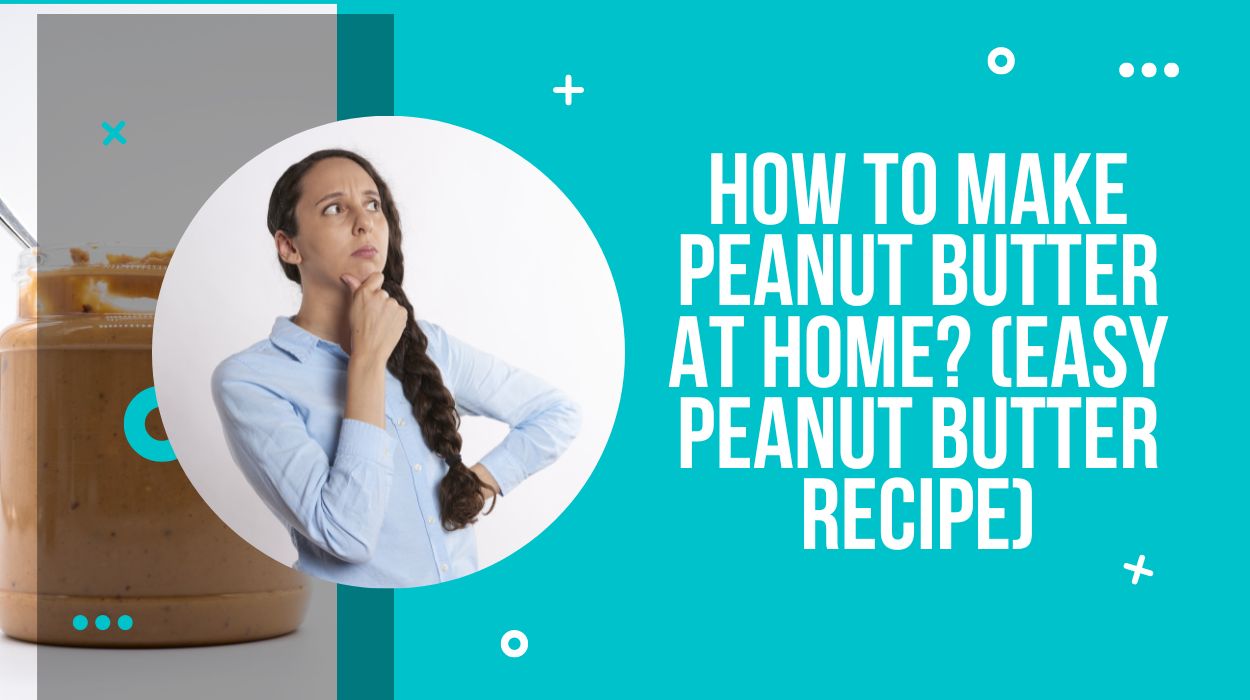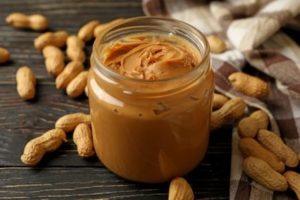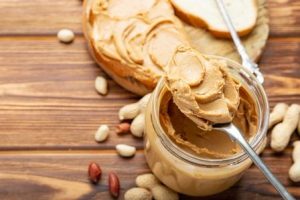You might have some basic idea about how easy it is to make homemade peanut butter? If you have tried it, then you would know it is the easiest thing to whip up, and it does not even take a lot of time. I would say that it is the best peanut butter.
However, if you haven’t, you have seriously missed out on this super easy homemade recipe!! Well, what are you waiting for?? Let’s get to it and whip up some smooth tummy homemade peanut butter. This article will provide a step-by-step guideline on how to make your own homemade peanut butter.
How To Make Peanut Butter At Home?
Ingredients –
- Peanuts – 2 cups
- Oil – ½ tsp
- Honey or sugar – 1-2 tablespoons
- Sea salt – to taste
Equipment –
- OTG oven
- Food processor
- Glass jar
Yield – One cup of peanut butter
Step by Step Guide To Make Peanut Butter at Home
Step 1 – The Roasting Process
Set the butter paper in the oven tray and place the peanuts on it. Make sure they are not clustered in a corner. Place it in the oven and bake it at 350°F or 177°C for 10 minutes or till it is light golden brown. If you do not have an oven, you can roast it on a medium flame for 3-5 minutes or till it becomes crunchy. Remove the skin and let it cool.
We recommend roasting the peanuts as it warms the oil in the nut, thus making it easier to be ground in a food processor. However, this step is entirely optional, and your choice has the final say. So, you can skip this step if you want to use raw (not roasted) peanuts to make the peanut butter.
Step 2 – The Grinding Process
For grinding peanut butter, use an S-blade. Please make sure the peanuts cool down before adding them into a food processor (can be substituted with a blender). If you are in a rush to make the peanut butter, at least make sure the peanuts are not hot; a mild warm temperature is alright. Start on low speed, then work your way up to higher speed levels.
Every 1 minute or so, stop the food processor to scrape the mixture down the bowl. Initially, the peanut butter mixture looks dry and powder-like, then it has a combined nuttier look. Blend it for one more minute, and it would look like a smooth, shiny creamy paste. The final paste is not very thick because the oil in the peanut is released as the food processor starts heating up.
Step 3 – Adding The Extra Ingredients
You can season the peanut butter with a pinch of sea salt. If you have a sweet tooth and want that extra touch of sweetness, then add in 1 or 2 tablespoons of sugar or honey. Add in about ½ teaspoon of oil if you want to loosen the thick paste and give it a smoother texture. You can add more oil if you want a very loose consistency.
Do keep in mind that these extra ingredients are optional. So, you can add it according to your preference or completely ignore it if you like it.
Step 4 – The Storage
It’s time to transfer the peanut butter into a clean, dry, air-tight glass jar. There are multiple benefits to using a glass jar instead of a plastic jar. A glass jar does not absorb the food and smell, so it is unlikely to be a breeding ground for germs.
Once you transfer it to a clean jar, refrigerate it so that it can last for about a month. Take the jar out of the refrigerator 15-20 minutes before using it so that the consistency is not very thick.
Special Step
If you want to try something different from the classy peanut butter, you can add a bit of cocoa powder to the basic peanut butter recipe. Voila, you have your very own chocolate peanut butter.
Benefits Of Peanut Butter
Both adults and children consume peanut butter. Not only does it taste highly yummy, but it also has a few nutritional benefits. It is a good source of niacin (B3), manganese, magnesium, and vitamin E and B6. Let us look at some of the benefits –
- Peanut contains oleic acid(omega 9), which helps maintain HDL, sugar, and pressure level.
- It also lowers the risk of heart diseases as well as diabetes.
- It enhances mood, relieves frustration and anger as the person becomes more energetic.
- It also has other skin and hair benefits.
Ways To Use Peanut Butter
The classic peanut butter and jam sandwich combo is the most common way to use peanut butter, and nothing will ever beat this. However, if you are looking for a change, there are a few other ways we can have peanut butter. Some of them are listed below –
- As topping over oatmeal or granola.
- Used as a binding agent in granola bars (homemade).
- It can be made into a tangy peanut sauce for noodles and pasta.
- We can use peanut butter as a salad dressing.
- As topping for fruits or fruits salads.
- Used as a binding agent in energy bars.
- It can be added to your smoothies for a peanutty taste and for that extra dose of protein.
- To make peanut butter cookies.
You May Also Like To Read:
How To Eat Peanut Butter For Weight Gain?
Healthy Ways of Eating Peanut Butter All Day Long
Your Takeaway
Peanut butter has been a classic spread that has been there for centuries. It is super easy to make and extremely cheaper than the ones who get in a store. Not only does it taste good, but it is an excellent source of vitamins and minerals. It also has many benefits as it contains omega 9 fatty acids.
I hope you found this article helpful. Please do let us know your doubts and queries in the comment section below.






